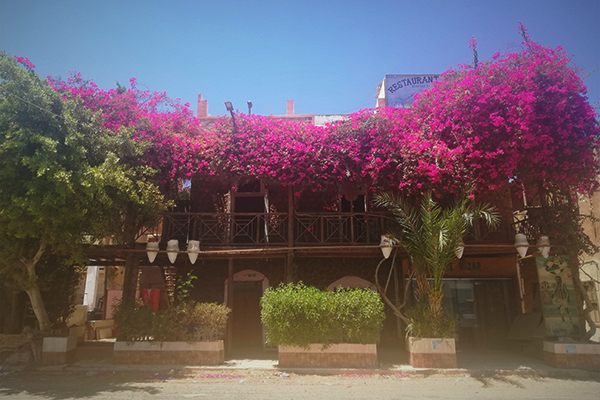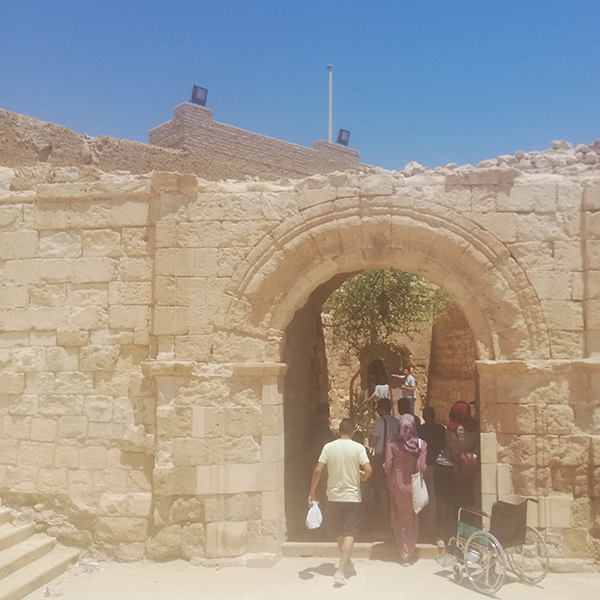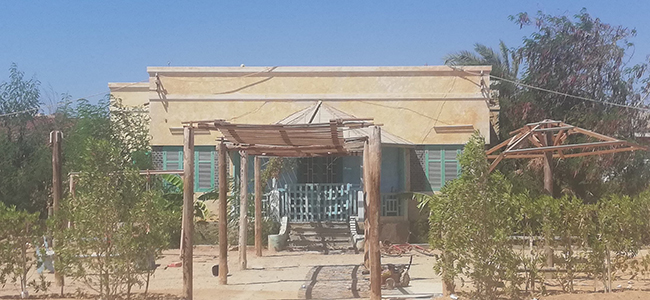
Quseir houses. by Amira Noshokaty
Based on the latest published PhD titled Monitoring Heritage and Urban Change along the Red Sea, Suez, and Quseir, a case study by Manar El-Gamal, Al-Ahram online sails into the tangible and intangible heritage of Quseir and Suez, respectively.
The first feature that greets the eye in the ancient port city of Quseir are the old houses made of wood, corals, and many pink flowers.
“The importance of Quseir dates back to ancient Egypt. Known as Tao during the reign of Queen Hatshepsut of the 18th dynasty, it was a city port and hub where ivory and gold from the African horn passed through on its way to the rest of Egypt,” explained El-Gamal, an architect awarded a PhD from Politecnico Di Milano Architecture and Urban Design University.
“The small harbour city of Quseir is one of the oldest cities in the area. The town was used by Pharaohs and Romans as a commercial port; for example, the ancient Egyptian queen Hatshepsut used the port as a base for launching trade journeys to the Land of Punt. The Arabs used it for pilgrimage to Mecca. During the French campaign in Egypt in 1799, Napoleon Bonaparte realised the importance of this port and tried to occupy the city but failed to stay in the city for a long time,” read the PhD.

Quseir houses. by Amira Noshokaty
Quseir is at the end of the shortest and safest path connecting the Nile and the Red Sea, it has been a crucial trade route from the days of ancient Egypt to this day. It was also the shortest caravan route for the yearly Muslim pilgrimage.
“It is said that the name Quseir is derived from the fact that it is the shortest route to the holy land,” added El-Gamal, explaining how the city flourished during the Mamluk era.

Qusseir sheikh house. by Amira Noshokaty
This tranquil city bears a lot of history. The route between the Nile and the Red Sea holds an ancient Egyptian gold mine, several roman water wells, and many sufi tombs of wallis that passed away during the holy pilgrimage. Some, however, chose to stay and be buried in Quseir.
The houses in the old souq are quite unique. Mainly built with mud, corals, and wood, they reflect Mamluk and Ottoman architecture. The house of Sheikh Tawfiq, a late chief of the Ababda tribe, remains a vivid example of such unique architectural gems. It has been repurposed as a boutique hotel run by his grandson; a relic in it’s own right.

Quseir citadel. by Amira Noshokaty
Quseir also has its own Ottoman citadel.
“The fortress of Quseir was constructed by the Ottoman Sultan Selim and was the first to protect the city against foreign invasions. Muhammad Ali rebuilt the fortress of the city and used its port for launching his military campaigns against the Wahhabis in Hijaz. The city is also a religious centre, home to a number of mosques and shrines,” read the research.
Sadly, Quseir’s fame did not last long after the Ottomans decided to make Suez the main port city of Egypt, and by the time the Suez canal was established and Safaga and Hurghada were constructed, Quseir was long forgotten.
It wasn’t until 1912 that Quseir started to regain some of its importance after “the Italians established the phosphate industry in Quseir. The phosphate factory was built by Emilio Cortese, an Italian engineer, who also created a foundation for the nucleus of an Italian colony that evolved until 1954,” explained El-Gamal, adding that the premises included schools, a church, houses for the workers and engineers, and an administrative building.

Quseir italian houses. by Amira Noshokaty
The Italian community gave the city a cosmopolitan flair, with the architecture of the houses reflecting a colonial style. With all this rich tangible and intangible heritage, the people of Quseir aim to get the city on the World’s heritage list.
Short link: